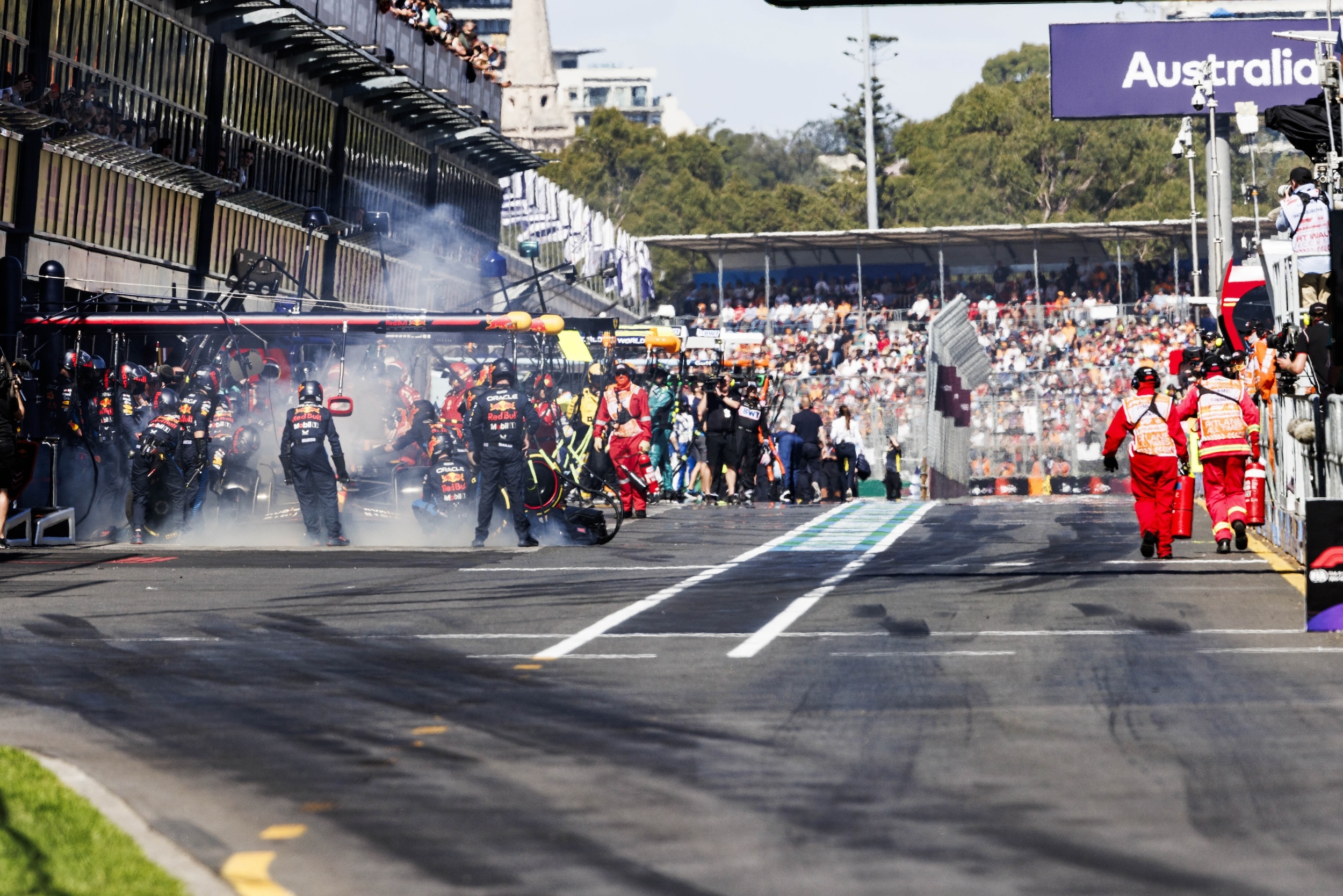For the North American fan of televised sports, the Australian Grand Prix is a big ask. It airs after midnight, in the weest of Sunday's wee hours. Like a lot of racing sports, most of the action is people driving in single file in a repetitive circuit, for a couple of hours. It's a brighter, noisier, and somewhat zippier procession than one of sheep hopping over a fence, but the mechanics are largely the same. A low-drama race, iterating uninterrupted loops at 1:30 in the morning, will simply lull a person to sleep, and no amount of televised exposure to Melbourne's bright antipodean late summer will stop it.
This dynamic is not helped at all by Max Verstappen's years-long dominance of the top step of the Formula 1 podium. He is the sport's best driver, and he is driving the sport's fastest car, and most of the other teams and drivers aren't even pretending to hope they can unseat him in a given race. It's fine and normal to care what happens in the contest for the final points positions in a Grand Prix, but if you're staying up until 2 a.m. for the privilege of watching the midfield sort itself out, that is probably something you should talk through with a mental health professional. I need at least a little juice up at the head of the file, especially if I'm going to have to spend the subsequent day in sleep-deprived zombie mode.
For reasons that have nothing to do with Formula 1 (and everything to do with a 3-year-old who should not have been watching the bizarrely terrifying Return to Oz so close to bedtime), I happened to find myself wide awake in the minutes before midnight Saturday, with time to lurch into the living room and flip over to ESPN. This decision came with the expectation that the race for the checkered flag would be settled inside of the event's first 30 minutes, as virtually all F1 races are in any weekend where Verstappen has not been saddled with some sort of grid penalty. I expected to be asleep soon, and to find out later about the other podium spots, and how the midfield was sorted, and what infuriating self-injury cost Ferrari championship points it cannot afford to lose. That Verstappen would win pretty easily may not have been a foregone conclusion—there'd been talk all weekend about Red Bull's issues with front-tire degradation and the inspiring performance at Albert Park of a couple of the other frontrunners—but that he had claimed pole position did not inspire any real hope that he might do anything other than win.
I did not allow myself to become very hopeful when Verstappen was overtaken in a DRS zone by Carlos Sainz Jr. on the second lap. Verstappen noted some control issues over the radio but didn't sound very worried, although it was somewhat surprising when his RB20 couldn't mount much of a charge with its back wing open on a subsequent straightaway, which during the Verstappen era has been a mystical superpower. But it was moments later, with Verstappen trying to hang within DRS range of Sainz, that the broadcast picked up blue-ish smoke following in the wake of the Red Bull. There was just enough time to wonder if it might've been road dust before the smoke thickened into a billow, and it became clear that something on Verstappen's car was on fire. A conflagration! As if a merciful deity, acting on behalf of a deeply tired viewership teetering on the edge of hope, reached down and hucked a lit match directly into Verstappen's brake duct.

Nothing that happened after Verstappen's early retirement was particularly dramatic (at least not until the final moments, when Fernando Alonso did some wacky driving and spooked George Russell into burying his Mercedes in a wall), but just that the front of the race was playing out with a different cast made for a much more interesting event. Suddenly there were questions and doubts, and reasons to believe that the decisions made by the drivers and their teams might influence the essential drama of a race, which is the matter of who will win. Instead of having one guy out there doing lonely fast laps with only a glancing relationship to the event around him, and everyone else engaged in battles for scraps, this time it felt like most of everyone was competing in the same contest.
Verstappen's pristine, metronomic dominance has the effect of making the rest of the field look like distractible bumbling morons driving trumped-up pocket rockets or derelict lawnmowers, who are advised over the radio by overburdened and short-tempered workers in an understaffed Italian call center. It's amazing what removing Verstappen from the field does for the contest that would otherwise be only fleetingly visible in his rearview mirrors. The imperfections of the drivers become natural and normal; the struggles with tire management become a gripping subdrama; the threat of mechanical kerplosion becomes an obvious and understandable consequence of incredible technical complexity. One driver and one car for one team nailing every single aspect of racing gives the false impression that they alone have achieved competence; it's hard not to feel a little bit of contempt for literally everyone else in the sport.
What I am saying is this: They should set Max's brakes on fire more often. Not all the time! But every once in a while. At several random points in a racing season, someone should sneak several compacted handfuls of dryer lint into his brake ducts. Sometimes before the start of a race; sometimes during a pit stop. It would be good for morale—not just the morale of viewers but also of Verstappen's competitors—if every so often Max's car burst into flames.






